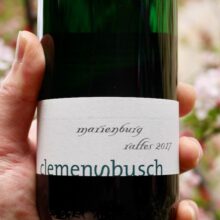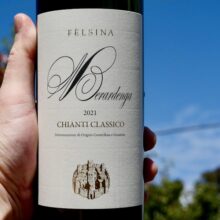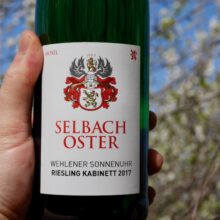Brettanomyces along with Dekkera are yeasts that are naturally present in wine. If left unchecked they can produce spoilage compounds making a wine undrinkable. At low levels they can add complexity to a wine. No one has been able to control the level of spoilage compounds produced and attempting to do so has proven futile and resulted in many undrinkable wines. The aromas and flavours include ‘Band aid®’ more down the Elastoplast line, smoke, clove, and spice, the wines often have a hard bitter metallic finish. At a low level, they can result in a fresh blood character in the wine.
They are managed through good vineyard and winery hygeine, managing residual nutrient levels present following completion of the alcoholic fermentation in simple terms the food sources for the bugs, mainly nitrogen and sugar, the pH of the wine, and the addition of the preservative sulphur.
Spoilage Compounds Produced
The following is from the Australian Wine Research Institute viewed 18 Feb 2022.
4-ethylphenol
The volatile phenol 4 ethylphenol is the major spoilage compound associated with the growth of Dekkera/Brettanomyces yeast in wine. This compound imparts a ‘Band aid®’, ‘medicinal’ or ‘pharmaceutical’ character to wine. A concentration of 425 µg/L of 4-ethylphenol has been reported to have a negative impact on the quality of many wines (Chatonnet et al 1992, 1993). Recent Australian AWRI sensory studies has shown the aroma threshold in Australian wine to be 368 µg/L in a neutral red wine (Curtin et al. 2008).
Evidence from sensory assessments and analyses conducted at the AWRI show that the sensory perception threshold of 4-ethylphenol depends very much on the style and structure of the wine. For example, the aroma threshold of 4-ethylphenol in a full bodied red wine with intense methoxypyrazine green character was 425 µg/L and considerable oak influence increased the aroma threshold to 569 µg/L (Figure 1). That is, the extent to which the sensory properties of a wine might be affected by 4-ethylphenol will depend on the concentration and intensity of other wine components that might mask (e.g. volatile oak compounds), or accentuate (e.g. 4-ethylguaiacol), the aroma of 4-ethylphenol.
4-Ethylphenol is produced by the enzymatic decarboxylation and reduction of p-coumaric acid (an hydroxycinnamic acid), by Dekkera/Brettanomyces sp. yeast. The hydroxycinnamates are an important group of phenolics present naturally in grapes and must, and the group include the derivatives of p-coumaric acid. p-Coumaric acid is present as the ester of tartaric acid in grapes, and postharvest hydrolysis, especially by pectin esterase, frees up the p-coumaric acid. The p-coumaric acid undergoes enzymatic decarboxylation to the corresponding vinylphenol due to the presence of cinnamate decarboxylase in yeast (not just Dekkera/Brettanomyces sp.). The last biochemcial step, the conversion of 4-vinylphenol to 4-ethylphenol, is effected by the enzyme vinyl-phenol reductase, which is present in Dekkera/Brettanomyces but is totally absent from Saccharomyces.
Although some microorganisms, such as bacteria, might be capable of volatile phenol production under some conditions (e.g. model medium enriched with certain phenols), the amounts produced are very small compared to those produced by Dekkera/Brettanomyces. Therefore, it is generally accepted that Dekkera/Brettanomyces is the only microorganism responsible for the phenol off-odour in red wines, and 4-ethylphenol is now a recognised marker compound for presence of this yeast.
4-ethylguaiacol
4-ethylguaiacol is another major spoilage compound associated with the growth of Dekkera/Brettanomyces yeast in wine and has been described as having a ‘clove’, ‘spicy’ or ‘smoky’ aroma. It is derived in same fashion as 4-ethylphenol but from a different precursor: ferulic acid. The aroma threshold for 4-ethylguaiacol is reported to be 110 µg/L, and was found to be 158 µg/L in Australian wine styles (Bramley et al. 2007). Whilst this concentration is much lower than for 4-ethylphenol, 4-ethylguaiacol is generally found in lower quantities in red wines, often 10 times less for Cabernet Sauvignon wines. Relative concentrations of 4-ethylphenol and 4-ethylguaiacol affect the overall perception of ‘Brett’ spoilage.
4-ethylcatechol
4-ethylcatechol is another spoilage compound reported to be associated with the growth of Dekkera/Brettanomyces yeast in wine and has been described as having a ‘horsey’ aroma. The aroma threshold for 4-ethylcatechol was found to be 774 µg/L in a neutral Australian red wine (Bramley et al. 2007). 4-Ethylcatechol is derived in same fashion as 4-ethylphenol but from a different precursor (caffeic acid). A survey of European wines found concentrations of 4-ethylcatechol similar to 4-ethylguaiacol (in Pinot and Cabernet wines).



